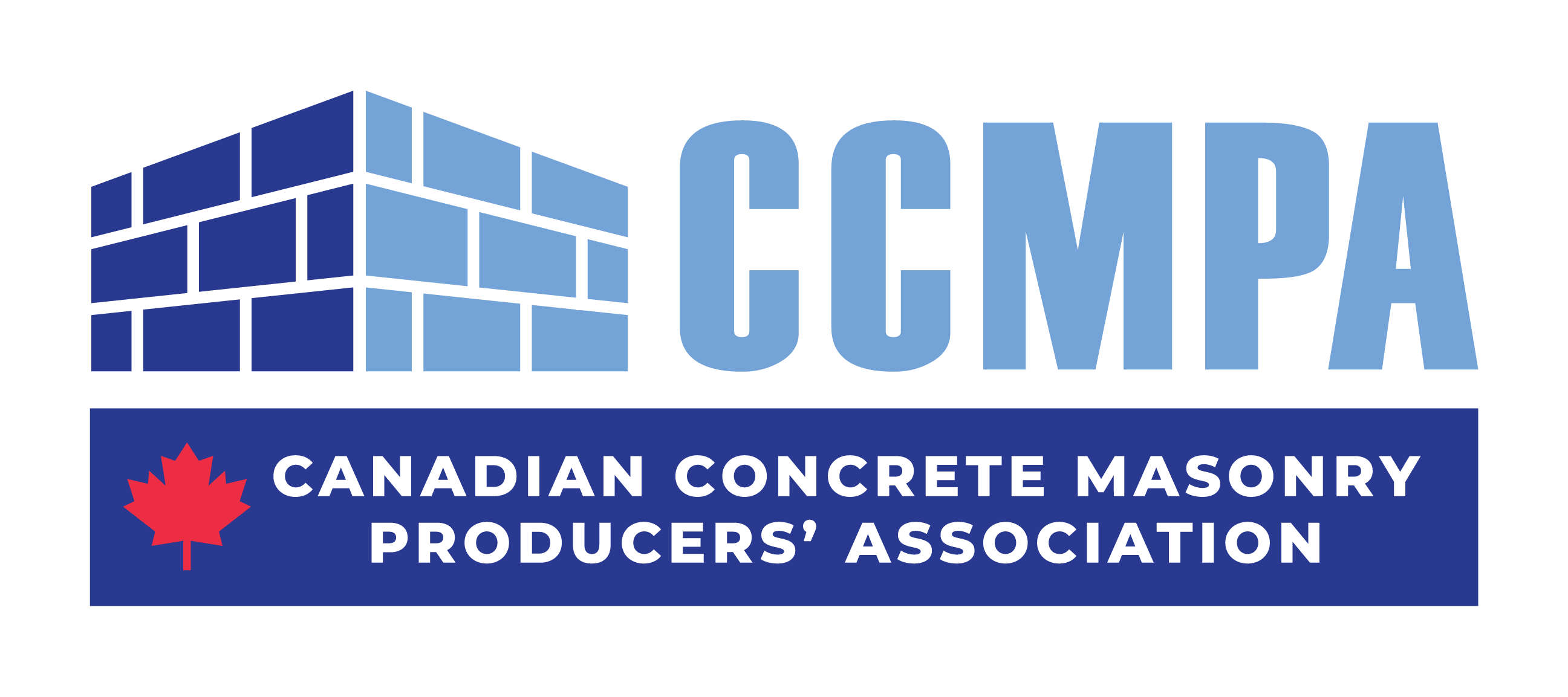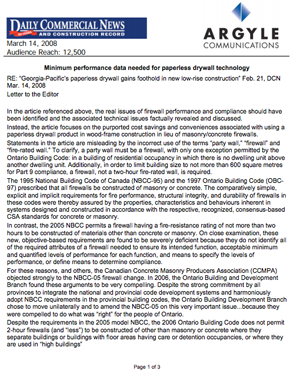RE: “Georgia-Pacific’s paperless drywall gains foothold in new low-rise construction” Feb. 21, DCN
Mar. 14, 2008
Letter to the Editor
In the article referenced above, the real issues of firewall performance and compliance should have been identified and the associated technical issues factually revealed and discussed.
Instead, the article focuses on the purported cost savings and conveniences associated with using a paperless drywall product in wood-frame construction in lieu of masonry/concrete firewalls.
Statements in the article are misleading by the incorrect use of the terms “party wall,” “firewall” and “fire-rated wall.” To clarify, a party wall must be a firewall, with only one exception permitted by the Ontario Building Code: in a building of residential occupancy in which there is no dwelling unit above another dwelling unit. Additionally, in order to limit building size to not more than 600 square metres for Part 9 compliance, a firewall, not a two-hour fire-rated wall, is required.
The 1995 National Building Code of Canada (NBCC-95) and the 1997 Ontario Building Code (OBC-97) prescribed that all firewalls be constructed of masonry or concrete. The comparatively simple, explicit and implicit requirements for fire performance, structural integrity, and durability of firewalls in these codes were thereby assured by the properties, characteristics and behaviours inherent in systems designed and constructed in accordance with the respective, recognized, consensus-based CSA standards for concrete or masonry.
In contrast, the 2005 NBCC permits a firewall having a fire-resistance rating of not more than two hours to be constructed of materials other than concrete or masonry. On close examination, these new, objective-based requirements are found to be severely deficient because they do not identify all of the required attributes of a firewall needed to ensure its intended function, acceptable minimum and quantified levels of performance for each function, and means to specify the levels of performance, or define means to determine compliance.
For these reasons, and others, the Canadian Concrete Masonry Producers Association (CCMPA) objected strongly to the NBCC-05 firewall change. In 2006, the Ontario Building and Development Branch found these arguments to be very compelling. Despite the strong commitment by all provinces to integrate the national and provincial code development systems and harmoniously adopt NBCC requirements in the provincial building codes, the Ontario Building Development Branch chose to move unilaterally and to amend the NBCC-05 on this very important issue…because they were compelled to do what was “right” for the people of Ontario.
Despite the requirements in the 2005 model NBCC, the 2006 Ontario Building Code does not permit 2-hour firewalls (and “less”) to be constructed of other than masonry or concrete where they separate buildings or buildings with floor areas having care or detention occupancies, or where they are used in “high buildings”
With these exceptions, comes an inherent acknowledgement that two-hour firewalls of other than concrete/masonry likely will not offer the same level of fire performance. Additionally, where permitted for other uses such as for party walls, which are targeted for market by the purveyors of the paperless drywall product, the OBC-06 requires the level of performance of such alternative firewalls to be not less than that of masonry or concrete in areas of performance during fire conditions, mechanical damage during normal use, and resistance to damage from moisture.
The OBC-06 requirements maintain an objective base and are intended to provide assurances to the Ontario public that designers, builders, purveyors and proponents of systems alternative to masonry or concrete firewalls must clearly demonstrate, by way of standardized tests and comparison, that such firewalls offer equivalency to masonry/concrete firewalls in all areas of fire performance and related structural performance.
To demonstrate equivalency, areas for consideration must examine all of the essential properties, characteristics and attributes needed by firewalls to perform satisfactorily, including those not specifically stated and unidentified by the NBCC-05 and OBC-06, and inherent in masonry/concrete construction prescribed by the NBCC-95 and OBC-97. Such areas would include, but are not necessarily limited to: resistance to renovation and abuse; duplicity of construction in the field; durability and on-going performance (alternatively stated, resistance to mechanisms of deterioration without maintenance throughout the design service life of the building, in readiness to satisfactorily
perform their intended functions during a fire); determination of fire-resistance rating (in its most simple form, requiring resistance to hose-stream after full duration of fire test rather than halfduration as is commonly reported for gypsum systems); structural and fire resistance to direct/localized impact during fire from collapsing members, falling construction debris or other objects, and to explosion; and overall and local structural integrity and serviceability at elevated temperatures.
A fire-resistance rating, breakaway clips, and paperless gypsum don’t necessarily “make” a firewall.Beyond the rhetoric, the simple truth is the purveyors of the “lighter, cheaper, faster” “Shaftliner” presently cannot demonstrate fire performance equivalency to masonry/concrete firewalls because (a) a comprehensive regulatory assessment system does not exist that includes identifying all of the required functions of a firewall, standardized tests to measure performance for each function, and pass/fail criteria for each function, and (b) “Shaftliner” performance data does not exist for each of these functions.
Objectively, the “Shaftliner” simply cannot comply with the firewall requirements of the Ontario Building Code.
Regardless of the material, component, or assembly intended for use in today’s construction, the only balance that exists between the oftentimes insatiable appetite for “lighter, cheaper, faster” is a need for minimum “performance.”
Gary R. Sturgeon, B.Eng., MSc. P.Eng.
Technical Services Engineer
Canadian Concrete Masonry Producers Association
National Concrete Masonry Association




